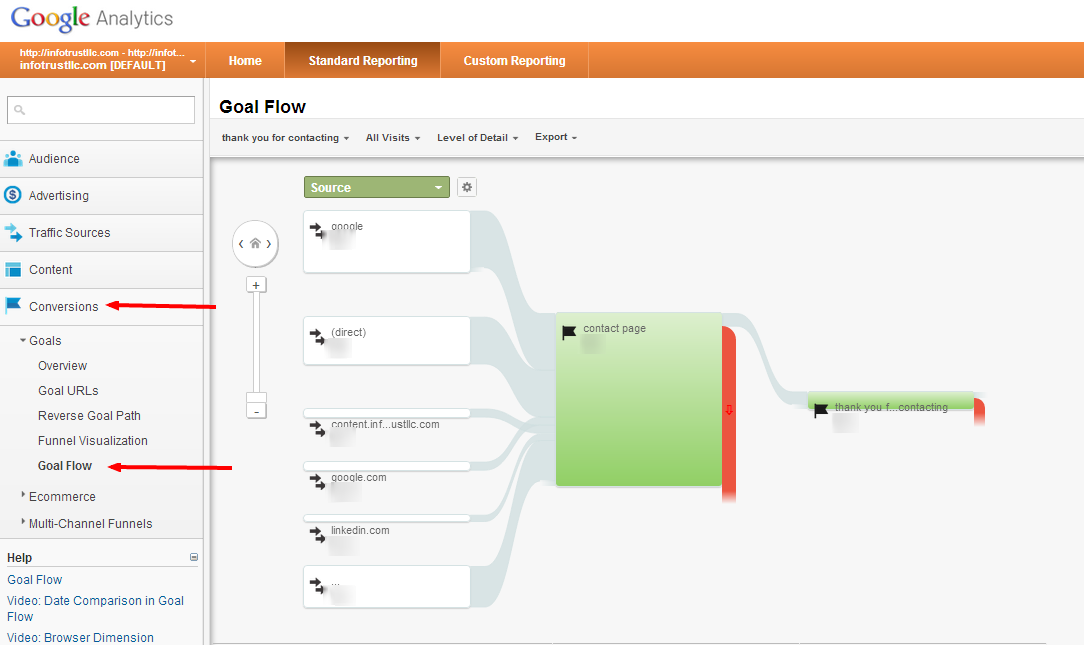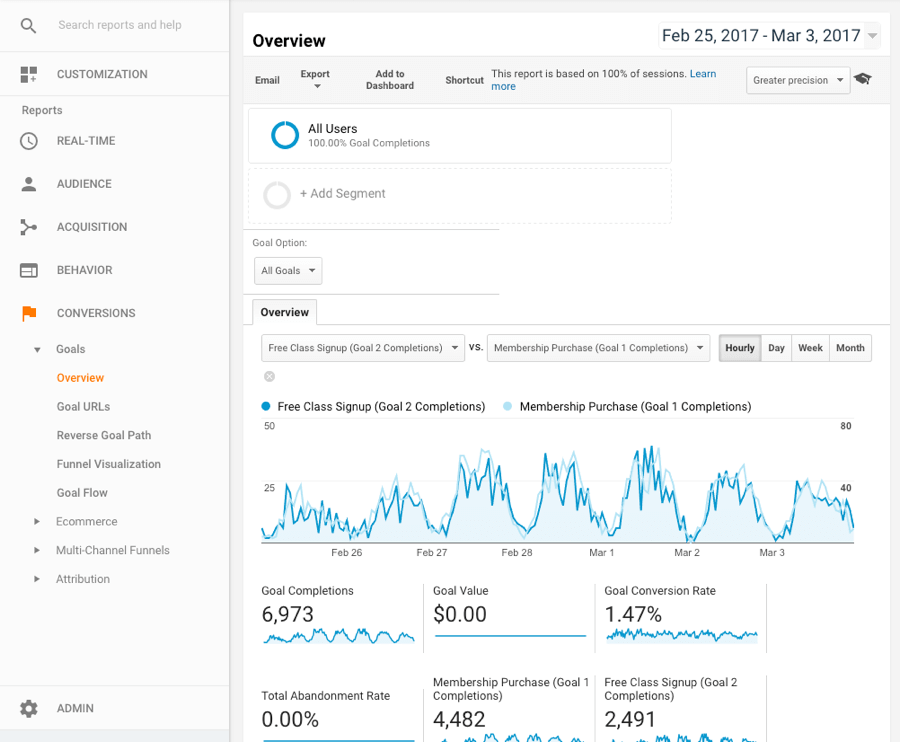Discover What Data Is Google Analytics Goals Unable to Track
Discover What Data Is Google Analytics Goals Unable to Track
Blog Article
Debunking Google Analytics Limitations: Discover What Data Goals Can not Track
In the realm of digital analytics, Google Analytics stands as a powerful device that provides useful understandings right into web site efficiency and individual actions. From the ins and outs of individual interaction with vibrant web content to the complexities of cross-device individual journeys, these limitations shed light on locations that might remain obscured from standard analytics viewpoints.

Customer Interaction With Dynamic Web Content
Customer interaction with dynamic material plays a vital duty in understanding individual actions on websites and enhancing the total customer experience. Dynamic content refers to aspects on a webpage that can transform without the requirement for a complete web page reload. This includes interactive aspects such as pop-ups, sliders, kinds, and video clips that react to customer activities in real-time. By tracking customer interactions with dynamic content, site owners can obtain beneficial understandings into individual involvement, choices, and actions.
Google Analytics offers different tools to track customer interactions with vibrant material, such as event monitoring and virtual pageviews. Occasion tracking allows you to keep track of particular customer actions, like clicking a button or seeing a video clip, offering information on exactly how individuals interact with dynamic components.
Cross-Device Customer Journeys
Just how can contemporary analytics devices track the complicated courses users take across multiple devices in their on-line trips? Cross-device individual trips present a significant obstacle for tracking and analyzing individual actions precisely. As users engage with applications or websites making use of different tools such as tablet computers, smart devices, and desktops, it ends up being important to recognize how they move between these systems to maximize customer experience effectively.
Google Analytics faces constraints in tracking cross-device individual journeys because of privacy worries and technical constraints - what data is google analytics goals unable to track. While it can provide understandings right into individual gadgets' communications, tracking a seamless customer journey across numerous tools continues to be a difficulty. This restriction can result in insufficient information and fragmented individual insights, making it hard for organizations to produce a unified view of the customer trip
To address this problem, companies can make use of innovative analytics tools that supply cross-device monitoring abilities, enabling them to obtain a much more holistic understanding of customer habits. By leveraging these tools, businesses can link the space in tracking cross-device user journeys and optimize their electronic methods for a seamless customer experience.
Offline Conversions and Attribution
As businesses browse the difficulties of tracking cross-device user trips, another pivotal element to take into consideration is the world of offline conversions and attribution in the world of information analytics. While Google Analytics supplies important understandings into on-line user actions, it falls short when it comes to tracking conversions that happen offline. This limitation presents a considerable difficulty for services that have both online and offline sales channels.
Offline conversions, such as purchases made in physical shops or through call facilities, are vital to understanding the total client journey. Without the capability to connect these offline conversions to certain online interactions, companies might struggle to precisely gauge the impact of their electronic advertising initiatives.
To resolve this gap, services can discover different services such as incorporating CRM systems with on-line analytics devices or utilizing special coupon codes that can be traced back to on the internet projects. By linking the void between online and offline information, businesses can acquire a much more thorough understanding of their consumers' habits and enhance their general advertising strategies.
Individual Individual Identification
In the realm of information analytics, the capacity to precisely recognize specific click over here customers throughout numerous online touchpoints is an important difficulty for services looking for to individualize and maximize their advertising and marketing methods. While Google Analytics gives beneficial understandings right into customer behavior and communications, it falls short in allowing the recognition of details individuals because of privacy concerns and technical restrictions. Google Analytics makes use of unique identifiers such as cookies to track individual sessions and actions, yet these do not relate to identifying private users in a personal sense.

Data From Secure Pages
Regardless of the enhancing frequency of safe pages on sites, obtaining information from these encrypted sources provides an unique difficulty for digital analytics systems like Google Analytics. Secure pages, shown by HTTPS in the URL, secure information exchanged in between the user's internet browser and the web site's server to guarantee privacy and safety. While this encryption is important for protecting delicate details, it likewise postures limitations for tracking individual actions and gathering analytics data.
Google Analytics encounters obstacles in collecting thorough information from protected web pages as a result of the file encryption procedures in place. Because of this, specific information factors such as referral resources, keyword searches, and even some user interactions might not be completely caught when customers access a website through a safe link. This constraint can influence the precision and efficiency of the information analysis, leading to gaps in recognizing customer actions and choices on protected pages.
To navigate this difficulty, digital analysts may require to discover different monitoring approaches or utilize various other tools particularly developed to gather insights from linked here secure pages. By adapting techniques to accommodate these limitations, businesses can still derive beneficial analytics despite the constraints offered by encrypted links.
Final Thought
In final thought, Google Analytics has restrictions in tracking individual interaction with dynamic content, cross-device customer trips, offline conversions, private user identification, and data from secure web pages. These limitations hinder a detailed understanding of individual habits and may lead to voids in information analysis. Regardless of its useful insights, Google Analytics might not provide a full photo of customer interaction across numerous touchpoints. It is vital for organizations to be knowledgeable about these restrictions and consider supplementary devices for a more all natural view of their information.
User interaction with vibrant content plays a vital role in recognizing user habits on internet sites and maximizing the overall individual experience. By tracking individual communications with dynamic web content, site proprietors can gain important understandings into user involvement, choices, and behaviors.
Google Analytics utilizes one-of-a-kind identifiers such as cookies to track user sessions and behavior, however these do not relate to recognizing individual users in an individual feeling.
As an outcome, certain data factors such as recommendation resources, keyword searches, and also some customer communications might not be completely recorded when customers access a website with a protected connection.In verdict, Google Analytics has constraints in tracking customer interaction with dynamic content, cross-device user journeys, offline conversions, private user identification, and data from protected pages.
Report this page